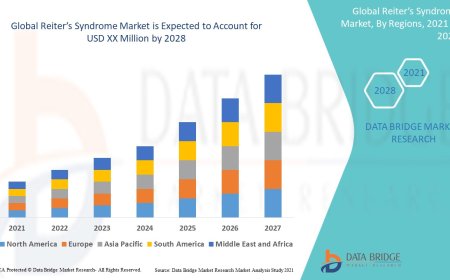A Practical Guide to Creating Immersive Web Experiences That Truly Engage
In todays digital world, creating an immersive web experience is essential for capturing the attention of users. With countless websites competing for attention, its crucial to design experiences that not only attract visitors but also keep them engaged. An immersive website can transform the way users interact with content, making it more memorable and impactful. This guide will explore practical strategies for creating immersive web experiences that truly engage your audience.
Understanding Immersive Web Experiences
Immersive web experiences go beyond traditional Immersive website design by incorporating interactive elements, multimedia, and engaging storytelling. These experiences aim to create a deeper connection between the user and the content, leading to increased engagement and satisfaction.
Key Characteristics of Immersive Web Experiences
- Interactivity: Users can interact with elements on the page, such as buttons, sliders, and animations. This interaction encourages exploration and keeps users engaged.
- Multimedia Content: Incorporating videos, audio, and animations enhances the overall experience. Multimedia content can convey messages more effectively than text alone.
- Storytelling: A compelling narrative can draw users in and create an emotional connection. Storytelling helps users relate to the content and remember it long after they leave the site.
Steps to Create Immersive Web Experiences
Creating an immersive website requires careful planning and execution. Here are some practical steps to guide you through the process.
1. Define Your Goals
Before diving into the design process, its essential to define the goals of your immersive web experience. Consider what you want to achieve and how you want users to interact with your content.
- Identify Your Audience: Understand who your target audience is and what they are looking for. This knowledge will help you tailor your content and design to meet their needs.
- Set Clear Objectives: Establish specific goals, such as increasing user engagement, driving conversions, or enhancing brand awareness. Clear objectives will guide your design decisions.
2. Choose the Right Design Elements
The design elements you choose play a significant role in creating an immersive experience. Focus on selecting elements that enhance interactivity and engagement.
- Responsive Design: Ensure your website is mobile-friendly and adapts to different screen sizes. A responsive design provides a seamless experience for users on any device.
- Visual Hierarchy: Use visual hierarchy to guide users through your content. Highlight important elements with size, color, and placement to draw attention where it matters most.
- Interactive Features: Incorporate interactive elements such as quizzes, polls, and sliders. These features encourage users to engage with the content actively.
3. Incorporate Multimedia Content
Multimedia content can significantly enhance the immersive experience. By using a mix of text, images, videos, and audio, you can create a more engaging environment.
- Videos: Embed videos that explain concepts, showcase products, or tell stories. Videos can capture attention and convey information more effectively than text alone.
- Animations: Use animations to illustrate processes or highlight key points. Subtle animations can make the experience feel more dynamic and engaging.
- Audio: Consider adding background music or sound effects to enhance the atmosphere. Audio can create an emotional connection and make the experience more memorable.
4. Focus on Storytelling
Storytelling is a powerful tool for creating immersive web experiences. A well-crafted narrative can captivate users and encourage them to explore further.
- Create a Compelling Narrative: Develop a story that resonates with your audience. Use relatable characters, challenges, and resolutions to draw users in.
- Use Visuals to Support the Story: Incorporate visuals that complement the narrative. Images, videos, and graphics can enhance the storytelling experience and make it more engaging.
- Encourage User Participation: Allow users to contribute to the story or make choices that affect the outcome. This interactivity can deepen their connection to the content.
5. Optimize for Performance
An immersive website must perform well to keep users engaged. Slow loading times or technical issues can lead to frustration and abandonment.
- Optimize Images and Videos: Compress images and videos to reduce loading times without sacrificing quality. Fast-loading content keeps users engaged and encourages exploration.
- Test Across Devices: Ensure your website functions smoothly on various devices and browsers. Testing helps identify and resolve any issues that may hinder the user experience.
- Monitor Analytics: Use analytics tools to track user behavior and engagement. Analyzing this data can provide insights into what works and what needs improvement.
The Role of XR Emails in Immersive Experiences
As technology advances, the integration of XR (Extended Reality) elements into web experiences is becoming increasingly popular. XR emails, which incorporate augmented reality (AR) and virtual reality (VR), can enhance user engagement and create memorable interactions.
Benefits of XR Emails
- Interactive Content: XR emails allow users to interact with 3D models or AR experiences directly within their inbox. This interactivity can lead to higher engagement rates and increased interest in the brand.
- Enhanced Storytelling: By incorporating XR elements, brands can create immersive narratives that captivate users. This storytelling approach can make the content more relatable and memorable.
- Unique Experiences: XR emails provide unique experiences that stand out in a crowded inbox. When users encounter something new and exciting, they are more likely to remember the brand.
Conclusion
Creating immersive web experiences requires a thoughtful approach that combines interactivity, multimedia content, and compelling storytelling. By defining your goals, choosing the right design elements, and optimizing for performance, you can engage users and create memorable interactions. Additionally, incorporating XR emails can further enhance the immersive experience, providing unique opportunities for engagement. As you implement these strategies, remember that the key to success lies in understanding your audience and delivering content that resonates with them. Embrace the power of immersive experiences, and you will foster deeper connections with your users, ultimately driving engagement and loyalty.







































